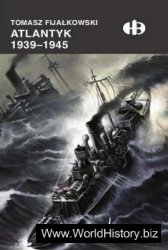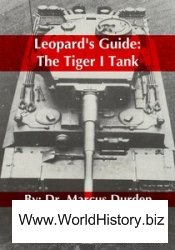Any discussion of the legacy of the Renaissance should consider the major historians and critics who interpreted the Renaissance for their contemporaries. Every historical period is filtered through the lens of later writers, who have conscious or subconscious agendas of their own. Those writers most influential in Western culture before the 20th century were Giorgio Vasari (see chapters 3 And 4), Jules Michelet (1798-1874), Jakob Burckhardt (1818-97), John Ruskin (1819-1900), John Addington Symonds (1840-93), and Walter Pater (1839-94). The 20th-century writers who have significantly directed our vision of the Renaissance included three specialists in art history, Bernard Berenson (1865-1959), Aby Warburg (1866-1929), and Erwin Panofsky (1892-1968), along with the historians Johan Huizinga (1872-1945), Hans Baron (1900-1988), Eugenio Garin (b. 1909), and Paul Oskar Kristeller (1905-99).
Jules Michelet was one of the most eminent French historians of the 19th century. His work, however, was grounded in the romantic ideal of humanity’s close relationship with nature. Michelet’s treatment of the Renaissance disallowed the enduring force of Catholicism and church politics, emphasizing instead a new age of individualism inspired by pagan antiquity. Jakob Burckhardt’s historical approach attempted to understand past epochs not through actual documents, but through reading of literary works and other publications to capture the spirit of the times. As did Michelet, he focused on what he believed was a new attitude of individualism, oversimplifying perceived differences between the Renaissance and preceding centuries. Nevertheless, Burckhardt’s unified myth concerning the development of human nature stimulated many scholars to turn to the Renaissance as a field of study. John Ruskin, who loved Venice, wrote mainly about architecture and art. Judging Renaissance art with a 19th-century critical eye, he faulted most 16th-century works as too analytical and mathematical, preferring what he described as the more natural styles of the latter 15th century. As many critics did, Ruskin judged the creative work of earlier times not by the standards of their contemporaries, but by his own aesthetic rules. John Addington Symonds’s multivolume publications interpreted the ideas of Burckhardt for English readers, expanding on his concept of the individual. As did Burckhardt, he failed to see the continuing importance of organized religion for Renaissance culture, in both its negative and its positive manifestations. The work of Walter Pater has been a major influence on many other scholars, especially his impressionistic yet uncannily effective discussions of the Renaissance artistic mentality. Although much of his criticism makes grand assumptions about an artist’s personality from the person’s works, that point of view has provided rich territory for later research.
Bernard Berenson’s own legacy included his Villa I Tatti near Florence, bequeathed to Harvard University as a center for studying the italian Renaissance. Berenson trained himself in connoisseurship, identifying artists and their schools chiefly by morphological characteristics (shapes of details such as ears and eyes in artworks). He always focused on the art objects themselves, not the culture in which they were produced. Berenson’s publications helped to popularize the art of the Renaissance, which he considered a golden age of creativity. Unlike Berenson, Aby Warburg was a cultural historian. Part of his personal legacy is his library, the Warburg Institute in London. Warburg’s iconographic research reached across scholarly disciplines, foreshadowing the multidisciplinarity prevalent in today’s Renaissance scholarship. His research into the pagan deities of antiquity informed not only his own publications but also those of his students. Erwin Panof-sky, a Jewish student of Warburg’s, escaped to the United States in 1934. Subsequently most of his publications, in English, were very influential on art history as a new scholarly field in his adopted country. Panofsky taught iconography, the “what” of Renaissance art, as well as iconology, the “why,” interpreting the art object in its cultural context.
Johan Huizinga criticized the emphasis placed on the individual by Burckhardt and his followers. He viewed the Renaissance not as a golden age, but rather as a turbulent transitional period between the Middle Ages and modern times. Huizinga probably would have agreed with today’s scholars who have replaced the term Renaissance with Early Modern to
Handbook to life in Renaissance Europe
Describe the epoch. Hans Baron fled from Nazi persecution to the United States in 1938. As were those of Panofsky, his major works were published in English, giving his ideas a much larger initial audience than if they had been published in German. Baron viewed 15th-century humanism as more politically and socially engaged than earlier movements, teaching that Renaissance civic humanism contained the seeds of modern republicanism. His close study of the political works of Machiavelli revealed nascent republican tendencies in this 16th-century writer. Eugenio Garin, a professor of the history of philosophy, investigated philosophical aspects of Renaissance humanism. Philosophy itself means “love of wisdom,” and Garin’s publications presented several sources of wisdom and learning important for Renaissance humanists. Paul Oskar Kristeller also escaped from Germany to the United States, where he joined the faculty of Columbia University in 1939. He may have published more on Renaissance topics than any other American scholar during the 20th century. His massive bibliography and fortunate longevity reinforced the hegemony of Italy. Kris-teller emphasized the significance of humanism in Renaissance education, and he dedicated part of his career to unearthing the manuscripts that were available to scholars during the 15th and 16th centuries.




 World History
World History









